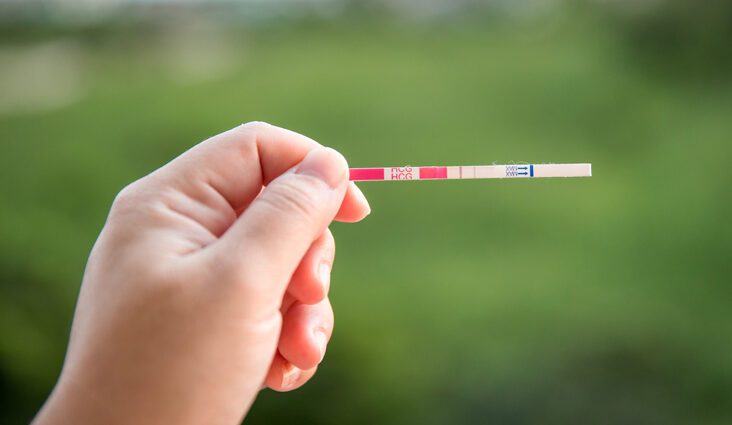Contents
Ovulation tests to increase your chances of pregnancy
Naturally, a woman has only a 25% chance of becoming pregnant in each menstrual cycle. To be pregnant, you have to have sex of course, but also choose the right time. The ideal: have sex right before ovulation, which usually takes place between the 11th and 16th day of the cycle (from the first day of your period to the last day before the next period). Neither before nor after. But beware, the ovulation date varies a lot depending on the length of the menstrual cycle, so ovulation is difficult to spot in some women.
Once released, the egg only lives for 12 to 24 hours. Sperm, on the other hand, retain their fertilizing power for about 72 hours after ejaculation. Result: each month, the window for fertilization is short and it is important not to miss it.
Ovulation tests: how does it work?
Research in gynecology has shown that a hormone, called luteinizing hormone (LH) is produced in greater quantities 24 to 36 hours before ovulation. Its production varies from less than 10 IU / ml at the start of the cycle to sometimes 70 IU / ml at the time of peak ovulation, before falling back to a rate of between 0,5 and 10 IU / ml at the end of the cycle. Objective of these tests: to measure this famous luteinizing hormone to detect the moment when its production is the most important, in order to determine the two most favorable days to conceive a baby. Then it’s up to you … You start on the calendar day indicated on the package insert (according to the usual length of your cycles) and you do it every day, every morning at the same time, until the peak of LH. When the test is positive, you must have sex within 48 hours. With respectively 99% reliability for urine tests and 92% for the saliva test, these home tests are as reliable as the tests performed in the laboratory. But be careful, this does not mean that you have more than a 90% chance of being pregnant.
Ovulation test bench
Test d’ovulation Primatime
Every morning at the time you expect to ovulate and for 4 or 5 days, you collect some urine (preferably the first in the morning) in a small plastic cup. Then, using the pipette, you drop a few drops on a test card. Result 5 minutes later. (Sold in pharmacies, around 25 euros, box of 5 tests.)
Clearblue test
This test determines the 2 most fertile days of your cycle. Just slip a refill into this small device every day, then place the tip of the absorbent rod directly under the urine stream for 5-7 seconds. If you prefer, you can collect your urine in a small container and immerse the absorbent rod in it for about 30 seconds. A ‘smiley’ appears on the screen of your small device? It’s a good day! (Sold in pharmacies, around 10 euros per box of XNUMX tests.)
In video: Ovulation does not necessarily take place on the 14th day of the cycle
Clearblue digital ovulation test with reading of two hormones
This test determines 4 fertile days, which is 2 days longer than the other tests because it is based on both LH level and estrogen level. Count around 38 euros for 10 tests.
Test d’ovulation MercuroChromium
It works on the same principle, ie it detects the LH surge in the urine, a sign that ovulation should occur within 24-48 hours.
Test d’ovulation Secosoin
It detects the presence of the hormone HCCG 24 to 36 hours before ovulation. This test is a bit more complicated to use. Urine must first be collected in a cup
Then, using a pipette, place 3 drops in the test window.
Other brands exist in France, so do not hesitate to ask your pharmacist for advice. There are also ovulation tests sold in large quantities on the internet, and based on the same principle as those bought in pharmacies. Their effectiveness is however less guaranteed, but they can be interesting if you want to do them every day, especially in the event of a very irregular menstrual cycle.










